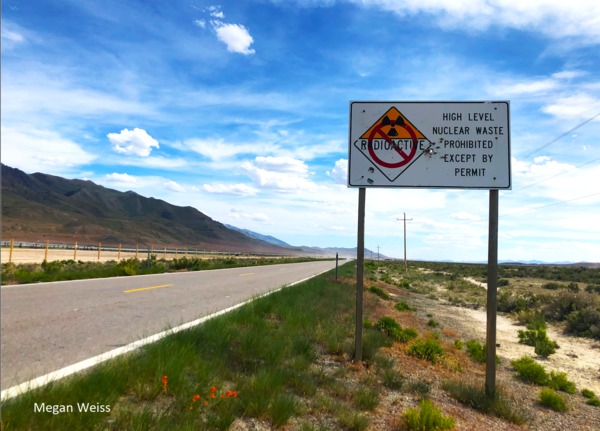Dublin Core
Title
Description
Perhaps no part of Utah suffers as much disregard as Utah’s arid and desolate West Desert. Everything from compacted urban trash to nuclear reactor waste seems to end up there among the tumbleweeds, alkaline salt flats, and jackalopes. Even the Deseret News once called it “a place to store and burn and bury our country's toxic trash.”
In the mid-twentieth century, the US military used Utah's West Desert for weapons testing. The Tooele Army Depot, for example, was created during World War II to store and demilitarize weapons, causing local communities to feel the occasional "boom" during what they called "bomb season" when the military disarmed their munitions. The Dugway Proving Ground is another wartime federal facility that became one of the centers of the nation’s chemical and biological weapons testing. Dugway ran into trouble in 1968 when testing a new nerve agent that accidentally killed 6,000 sheep grazing in the desert.
While desolate, the West Desert is not uninhabited. The Skull Valley Goshutes lived on the southern shores of Great Salt Lake for millennia before being confined to a reservation of about 18,000 acres in the 1910s. After World War II, the Goshute worked with the weapons and aerospace industry in business-savvy ventures that brought money into their small community. They built and rented out rocket testing facilities in the 1970s, taking advantage of the isolated land in their own way.
But controversy struck the Tribe's ventures in the 1990s when the federal government approached the Goshute with an offer to store radioactive nuclear waste in exchange for federal funds. Not only did the Goshute need the money, but Native reservations are sovereign land and therefore exempt from state and local laws governing radioactive disposal. But the Goshute’s project was shut down before it could begin. Disagreement about the deal within the Skull Valley Tribe fractured their leadership, and state and federal forces worked together to deny the permits that would have allowed the transportation of nuclear waste in the area.
A roadsign banning the transport of nuclear waste still stands in Utah’s West Desert – riddled with bullet holes – as a lone homage to the region’s long legacy of nuclear and toxic wastelanding.
Creator
Source
_______________
See Elaine Jarvik, “West desert: our polluted, big back yard,” Oct 29, 1999, Deseret News, accessed April 2024; Dennis R. Defa, “The Goshute Indians of Utah,” in A History of Utah’s American Indians (Utah Historical Society, 2000): pp. 73–122; Tim Westby, “Nuclear storage site splinters Goshutes – Pressure from inside and outside could derail waste plan,” November 19, 2001, High Country News, accessed April 2024; Randel D. Hanson, “An Experiment in (Toxic) Indian Capitalism?: The Skull Valley Goshutes, New Capitalism, and Nuclear Waste.” Political and Legal Anthropology Review 24, no. 2 (2001): pp. 25–38; Chip Ward, Canaries on the Rim: Living Downwind in the West (Verso Books, 1999); Tyrone Heath, “Tooele Army Depot,” Intermountain Histories, accessed May 2024; H. Josef Hebert, “Store nuclear waste on reservation? Tribe split,” June 27, 2006, NBC News, accessed April 2024; "Radioactive Racism: The History of Targeting Native American Communities with High-Level Atomic Waste Dumps,” 2005, Nuclear Information and Resource Service and Public Citizen, accessed April 2024; Nancy B. Collins and Andrea Hall, “Nuclear Waste in Indian Country: A Paradoxical Trade,” Minnesota Journal of Law & Inequality 12, no. 2 (1994).

